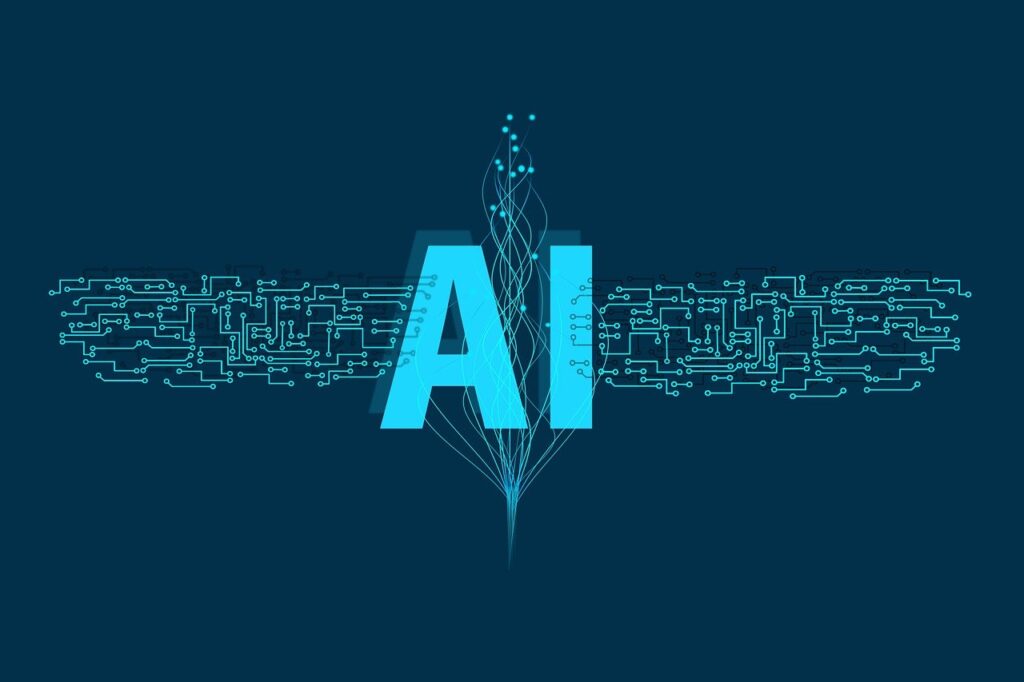In today’s fast-paced and technology-driven world, businesses rely heavily on their intellectual property (IP) assets to gain a competitive edge. Intellectual property, which includes patents, trademarks, copyrights, and trade secrets, plays a pivotal role in protecting innovation and fostering creativity. Managing these assets efficiently is crucial for businesses, and this is where AI (Artificial Intelligence) steps in as a game-changer.
Harnessing the Power of AI in IP Portfolio Management
Managing an intellectual property portfolio involves various tasks, from patent searches and trademark monitoring to IP strategy development and infringement detection. Traditionally, these tasks were time-consuming and required significant manual effort, making it challenging for companies to stay on top of their IP portfolios. This is where AI comes into play, revolutionizing the way businesses handle their intellectual property assets.
1. Patent Searches and Prior Art Analysis
One of the fundamental aspects of intellectual property management is conducting thorough patent searches and analyzing prior art. This is essential to determine the novelty and patentability of an invention. With the advent of AI, patent lawyers and IP professionals now have powerful tools at their disposal.
AI-Powered Patent Search Engines
Generative AI and Patent Lawyers have begun using AI-powered patent search engines that can scan millions of patents and scientific literature documents in seconds. These engines use Natural Language Processing (NLP) and Machine Learning (ML) algorithms to provide highly relevant search results. They can also perform semantic analysis to identify related concepts and technologies, making it easier to identify potential prior art.

AI-Enhanced Prior Art Analysis
AI algorithms can extract critical information from patent documents, such as claims, descriptions, and drawings, and compare them to existing patents. This not only accelerates the prior art analysis process but also reduces the chances of overlooking relevant prior art. Legal AI can even predict patent examiner decisions based on historical data from the USPTO (United States Patent and Trademark Office) and other patent offices.
2. Trademark Monitoring and Enforcement
For businesses, protecting their brand identity through trademarks is essential. However, monitoring trademarks for potential infringement can be a daunting task, especially as businesses expand globally. AI is becoming a valuable ally in this endeavor.
AI-Driven Trademark Monitoring Tools
AI-powered trademark monitoring tools can continuously scan various online and offline sources, including websites, social media platforms, and marketplaces, to identify potential trademark infringements. These tools use image recognition, text analysis, and machine learning to detect unauthorized use of trademarks, enabling businesses to take timely legal action.
Predictive Analytics for Trademark Enforcement
Legal AI can also provide predictive analytics for trademark enforcement. By analyzing historical data and tracking trademark infringements, AI systems can help businesses anticipate potential issues and prioritize enforcement efforts. This proactive approach can save both time and resources.
3. IP Strategy Development
Developing a robust IP strategy is essential for businesses to maximize the value of their intellectual property assets. AI can assist in this crucial aspect of IP management.
AI-Driven Competitive Analysis
Machine learning algorithms can analyze vast amounts of data from competitors’ patents, publications, and market trends to identify emerging technologies and potential threats. This information can guide businesses in shaping their IP strategies and making informed decisions about patent filing, licensing, or acquisition.
Portfolio Optimization
AI can also help optimize an IP portfolio by identifying underutilized assets, recommending cost-effective maintenance strategies, and evaluating the potential for monetization through licensing or sales. This ensures that businesses get the most value from their IP investments.
4. Infringement Detection and Litigation Support
Detecting IP infringement and supporting legal action against infringers is a critical aspect of IP portfolio management. Legal AI is making this process more efficient and effective.
AI-Powered Infringement Detection
AI Chat Assistants and Machine Learning algorithms can sift through vast amounts of data, including online content, marketplaces, and product listings, to identify potential IP infringements. These tools can flag suspicious activities for further investigation, enabling legal teams to take prompt action.
Predictive Analytics for Litigation
Legal AI can analyze historical litigation data to provide predictive analytics for IP litigation. By assessing the likelihood of success in legal actions and estimating potential costs, businesses can make informed decisions about pursuing infringement cases. This reduces the uncertainty and risk associated with IP litigation.
The Growing Role of Legal AI in the Workplace
AI in the workplace is no longer a futuristic concept; it’s a reality. The legal industry is no exception, and the integration of AI, specifically in intellectual property portfolio management, is reshaping the way legal professionals work.
1. Increased Efficiency and Productivity
One of the most significant advantages of AI in legal practice and machine learning is the boost in efficiency and productivity. Repetitive and time-consuming tasks, such as document review and data extraction, can now be automated, allowing legal professionals to focus on higher-value tasks that require human judgment and expertise.
Document Review Automation
Legal AI systems can review and categorize vast volumes of legal documents, contracts, and case law quickly and accurately. This not only reduces the risk of human error but also speeds up the research process, enabling lawyers to access critical information more rapidly.
2. Enhanced Decision-Making
AI-powered tools provide legal professionals with data-driven insights that can inform strategic decisions. This is particularly valuable in IP portfolio management, where making informed choices about patent filing, maintenance, and enforcement is crucial.
Data-Driven IP Strategies
AI can analyze extensive datasets to identify trends, patterns, and potential risks in the IP landscape. This data-driven approach empowers businesses to make informed decisions about their IP strategies, ensuring they align with their overall business objectives.
3. Cost Reduction
Cost management is a pressing concern for businesses across industries, and legal operations are no exception. In the legal domain, where time is often billed by the hour, every moment counts. This is where AI-driven tools step in to alleviate one of the most significant cost contributors: legal research expenses. Traditional legal research is a labor-intensive process that involves sifting through extensive volumes of case law, statutes, regulations, and legal precedents. However, AI-driven research tools have revolutionized this practice by significantly reducing both time and costs.
AI-powered research tools are designed to swiftly and accurately extract pertinent information from vast databases. By leveraging Natural Language Processing (NLP) and Machine Learning (ML), these tools can identify and prioritize relevant case law, statutes, and regulations that pertain to a specific legal matter. This automation not only accelerates the research process but also ensures that legal professionals have access to the most up-to-date and relevant information, reducing the risk of oversight and misinterpretation. As a result, billable hours are minimized, allowing legal practitioners to focus on higher-value tasks that require their expertise and judgment.

4. Improved Compliance and Risk Management
Navigating the intricate web of laws and regulations is a complex task that requires constant vigilance. In this context, Legal AI emerges as a transformative solution, playing a pivotal role in ensuring businesses’ adherence to the relevant legal mandates.
One of the groundbreaking ways in which Legal AI is bolstering compliance and risk management is through real-time compliance monitoring. AI systems are adept at continuously monitoring changes in laws and regulations at both the federal and state levels. These systems are designed to be vigilant, always scanning for updates, amendments, or new legal requirements that may impact a business’s intellectual property (IP) portfolio. This real-time monitoring extends to industry-specific regulations and international laws, ensuring comprehensive coverage. By promptly identifying regulatory changes, Legal AI provides legal teams with a crucial advantage in maintaining compliance.
Furthermore, this proactive approach to compliance minimizes the risk of non-compliance and potential legal disputes. When AI systems detect relevant legal modifications, they can promptly alert legal teams. Armed with this up-to-the-minute information, businesses can swiftly adjust their IP strategies, policies, and operational practices to align with the new legal landscape. This not only mitigates the risk of costly legal disputes but also upholds a company’s reputation as a responsible and law-abiding entity. In an environment where regulatory changes can occur suddenly and have far-reaching consequences, real-time compliance monitoring powered by Legal AI offers a safeguard against legal pitfalls and reinforces the compliance framework of modern businesses.
5. AI in Patent Drafting and Prosecution
AI is not only assisting in the search and analysis phases but also in the creation of new intellectual property assets. Patent drafting and prosecution, traditionally labor-intensive and subject to human error, are being streamlined and improved through AI technologies.
AI-Generated Patent Claims
Generative AI has shown promise in generating patent claims and descriptions. These systems can analyze existing patents, understand technical concepts, and produce drafts that meet the USPTO’s stringent requirements. While human review and refinement are still essential, AI can significantly expedite the initial drafting process.
Predictive Analytics for Patent Prosecution
Machine learning algorithms can analyze historical patent prosecution data to predict examiner behavior and likely outcomes. This enables patent lawyers to tailor their strategies and responses for more favorable results, reducing the time and resources needed for prosecution.
6. AI-Powered Licensing and Monetization
Monetizing intellectual property assets is a critical goal for many businesses. AI can assist in identifying licensing opportunities and maximizing revenue from IP portfolios.
Licensee Identification
AI-driven tools can scan vast databases and marketplaces to identify potential licensees or buyers for intellectual property assets. By matching patent or trademark characteristics with industry trends and company profiles, businesses can target potential partners more effectively.
Royalty Tracking
Once licensing agreements are in place, AI can automate royalty tracking and payments. This ensures that IP owners receive their due compensation promptly and accurately, reducing disputes and administrative overhead.
7. Natural Language Processing for IP Contracts
Contracts are at the heart of intellectual property management. AI-powered Natural Language Processing (NLP) systems can analyze and extract critical information from IP-related contracts, reducing the risk of oversight and disputes.
Contract Analysis
NLP algorithms can parse through contracts to identify key terms, obligations, expiration dates, and termination clauses. This automated contract analysis helps businesses keep track of their IP-related agreements and ensures compliance.
Risk Assessment
AI can also assess contract risk by identifying potential conflicts or ambiguities. This allows legal teams to proactively address issues before they escalate into disputes or litigation.
8. AI for IP Strategy Adjustment
The intellectual property landscape is dynamic, and businesses must continuously adapt their strategies to align with evolving technologies and market conditions. AI can assist in real-time strategy adjustments.
Market and Technology Monitoring
AI can continuously monitor industry trends and emerging technologies, providing businesses with insights into potential areas for IP expansion or divestment. This proactive approach ensures that IP portfolios remain relevant and valuable.
Competitive Intelligence
AI-driven competitive intelligence tools can track competitors’ IP activities and identify opportunities or threats. This information empowers businesses to adjust their strategies accordingly, whether through defensive patenting or targeted licensing.
9. AI Ethics and Data Security
As AI becomes more integrated into intellectual property portfolio management, ethical and data security considerations are paramount.
Ethical Considerations
AI should be used ethically and in compliance with data privacy regulations. Legal professionals must ensure that AI systems used for IP management do not compromise client confidentiality or violate ethical standards.
Data Security
The vast amounts of sensitive intellectual property data handled by AI systems necessitate robust data security measures. Encryption, access controls, and regular security audits are essential to protect against data breaches and unauthorized access.

Conclusion
The integration of AI into intellectual property portfolio management is transforming the way businesses protect and leverage their valuable IP assets. From patent searches and trademark monitoring to IP strategy development and litigation support, AI is enhancing efficiency, reducing costs, and enabling data-driven decision-making in the legal domain. As AI continues to evolve, its role in IP management will only become more significant, offering businesses a competitive advantage in safeguarding their innovations and brand identities.
